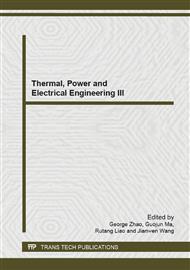p.1290
p.1295
p.1300
p.1304
p.1308
p.1312
p.1319
p.1325
p.1331
The DMT Power Line Channel Sparse Bayesian Regression Estimation Based on Communication System
Abstract:
This paper introduces the power line communications channel estimation method based on sparse Bayesian regression, it is through the use of Bayesian learning framework that provides a sparse model in the presence of noise accurate channel estimation model. Improved channel estimation using the power line for the system to consider the frequency domain equalization (FREQ) transmitter and receiver, the bit error rate and comparing the two methods for generating various channel estimation techniques, and (BER) performance curves simulation the results show that the performance of the method is better than the previous method of least squares technique.
Info:
Periodical:
Pages:
1308-1311
Citation:
Online since:
June 2014
Authors:
Keywords:
Price:
Сopyright:
© 2014 Trans Tech Publications Ltd. All Rights Reserved
Share:
Citation:


